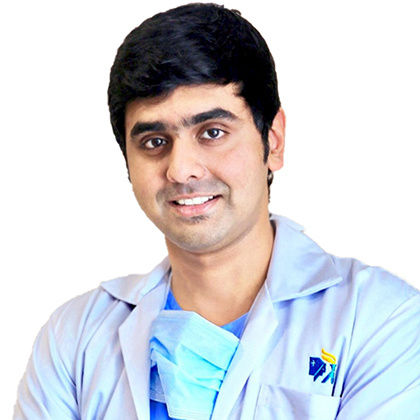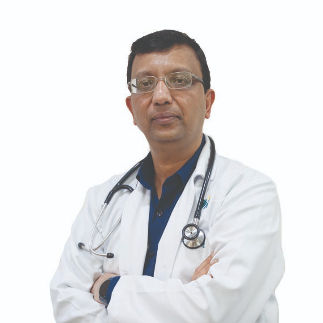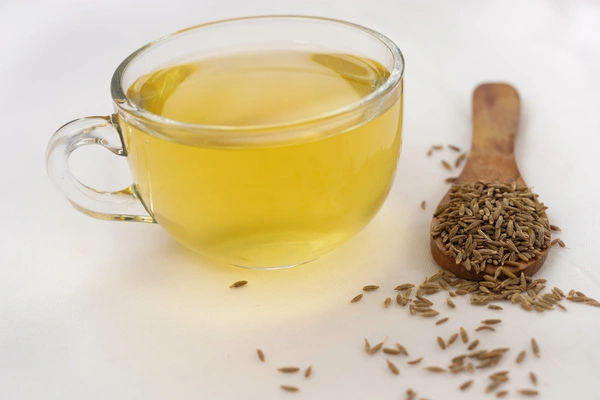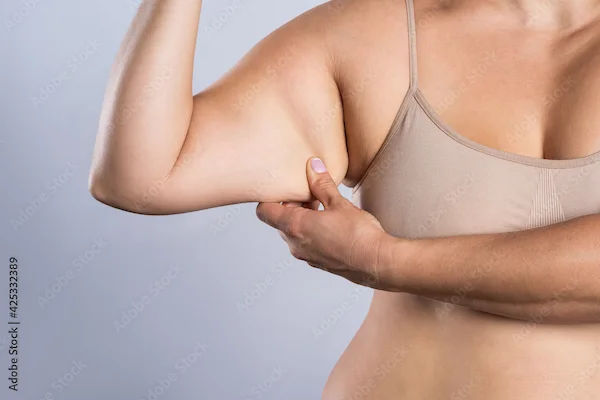How To Reduce Subcutaneous Fat?
Excess subcutaneous fat can impact your health and body shape. Explore practical ways to reduce it through diet, exercise, and proven non-invasive methods.

Written by Dr.Sonia Bhatt
Last updated on 3rd Jul, 2025

Introduction
Subcutaneous fat is the layer of fat stored just beneath the skin. While it serves essential functions like cushioning and insulation, excessive subcutaneous fat can pose health risks and affect your body image. If you’re looking to reduce subcutaneous fat, you’re not alone. Many people want to achieve a leaner, healthier physique and improve their overall well-being. In this comprehensive guide, we’ll explore effective strategies for reducing subcutaneous fat, from dietary changes to exercise routines and even non-invasive treatments.
What Is Subcutaneous Fat?
Subcutaneous fat is the soft fat that you can pinch between your fingers, unlike visceral fat, which is stored deeper inside your organs. This type of fat is the most visible and is typically stored in areas like your belly, thighs, and arms. While subcutaneous fat is necessary for normal body functions, too much of it can lead to health problems such as cardiovascular disease, diabetes, and joint issues. Additionally, excess subcutaneous fat can impact your appearance and self-esteem.
Why Should You Reduce Subcutaneous Fat?
Excess subcutaneous fat can affect your body in more ways than one. Here’s why you might want to work on reducing it:
1. Health Benefits
Reducing subcutaneous fat isn’t just about appearance—it plays a crucial role in maintaining overall health.
Better Heart Health: Carrying excess fat can raise your cholesterol and blood pressure, increasing your risk of heart disease.
Improved Blood Sugar Control: Reducing subcutaneous fat helps your body regulate blood sugar more effectively, lowering the risk of developing type 2 diabetes.
Less Stress on Your Joints: Extra weight puts additional pressure on your joints, especially the knees and hips, which can lead to pain and even conditions like arthritis.
2. Aesthetic Benefits
Shedding subcutaneous fat can enhance your body’s natural contours, giving you a leaner, more toned look.
A Tighter, Leaner Body: Losing subcutaneous fat can help you achieve a more toned and sculpted physique, which can improve your confidence and overall body image.
Healthier, Firmer Skin: When you lose fat the right way—through a combination of diet and exercise—you may notice that your skin becomes firmer and more elastic.
Causes of Excess Subcutaneous Fat
Several factors contribute to the accumulation of subcutaneous fat, including:
Dietary Habits: High intake of processed foods, sugary snacks, and fatty meals can lead to an increase in fat stores. Overeating or consuming more calories than your body needs for energy can result in fat accumulation.
Lack of Physical Activity: A sedentary lifestyle, coupled with insufficient exercise, allows fat to build up in the body, particularly in the form of subcutaneous fat.
Hormonal Imbalances: Hormones like cortisol, estrogen, and insulin can play a significant role in fat distribution. Stress and poor sleep can elevate cortisol levels, leading to fat storage, especially in the belly area.
Genetics: Your genetic makeup determines where your body is more likely to store fat. For some people, subcutaneous fat may be more prominent in areas like the thighs or arms.
Effective Ways to Reduce Subcutaneous Fat
The good news is that subcutaneous fat can be reduced through several strategies. Let’s look at the most effective methods for achieving fat loss.
1. Create a Caloric Deficit
One of the most fundamental principles for reducing any type of fat, including subcutaneous fat, is creating a caloric deficit. This means that you consume fewer calories than your body burns. When this happens, your body starts breaking down stored fat for energy.
Track Your Calories: Use a food diary or a mobile app to track your daily calorie intake and expenditure. Aim for a moderate deficit of about 500 calories per day, which results in a healthy weight loss of approximately one pound per week.
Choose Nutrient-Dense Foods: Focus on eating whole foods like vegetables, fruits, lean proteins, and whole grains. These foods are lower in calories but high in essential nutrients, which support your overall health.
2. Adopt a Healthy, Balanced Diet
Your diet plays a crucial role in fat reduction. Here are some dietary strategies that can help you lose subcutaneous fat:
Increase Protein Intake: Protein is essential for muscle growth and repair, and it can also help you feel fuller longer. Lean meats, eggs, tofu, and legumes are excellent sources of protein.
Eat More Fiber: Fiber-rich foods like vegetables, fruits, whole grains, and legumes aid in digestion, prevent bloating, and help you stay full.
Limit Sugar and Refined Carbs: Excess sugar and refined carbohydrates, such as white bread and pastries, contribute to fat storage. Opt for complex carbs like brown rice and oats instead.
Healthy Fats: Include healthy fats in your diet, such as those found in avocados, nuts, and olive oil. These fats support satiety and provide essential nutrients for your body.
Stay Hydrated: Drinking plenty of water aids in metabolism and helps control hunger. Aim for at least eight 8-ounce glasses of water per day.
3. Exercise Regularly
Regular physical activity is one of the most effective ways to reduce subcutaneous fat. Both cardiovascular exercise and strength training are important components of a well-rounded fitness regimen.
Cardiovascular Exercise: Cardio workouts, like running, cycling, swimming, and brisk walking, help burn calories and fat. Aim for at least 150 minutes of moderate-intensity aerobic activity per week.
Strength Training: Strength training exercises, such as weightlifting or bodyweight exercises (like squats, lunges, and push-ups), are essential for building lean muscle mass. Muscle burns more calories at rest compared to fat tissue, boosting your metabolism. Incorporate strength training at least two to three times per week.
High-Intensity Interval Training (HIIT): High-Intensity Interval Training (HIIT) is a cardiovascular exercise strategy that involves alternating between short periods of intense anaerobic exercise and less intense recovery periods. This method has been demonstrated to improve both aerobic and anaerobic fitness more effectively than moderate-intensity continuous training. HIIT can be done using various exercises, including running, cycling, and bodyweight exercises such as burpees and jumping jacks.
4. Get Enough Sleep and Manage Stress
Sleep and stress levels have a profound impact on fat accumulation. Chronic stress and poor sleep quality can elevate cortisol, the stress hormone linked to abdominal fat storage.
Sleep: Aim for 7-9 hours of quality sleep per night. Good sleep supports metabolism, reduces hunger hormones, and helps your body recover from workouts.
Stress Management: Practice stress-reducing activities like yoga, meditation, deep breathing, and spending time outdoors. Managing stress not only lowers cortisol but also improves overall well-being.
5. Non-Invasive Fat Reduction Techniques
If you’re looking for quicker results or additional methods, there are non-invasive fat reduction treatments available. While these methods won’t replace a healthy lifestyle, they can complement your efforts.
Cryolipolysis (CoolSculpting): This treatment works by freezing fat cells, which the body gradually eliminates over time. It’s especially effective for areas like the belly and love handles.
Radiofrequency (RF) Therapy: RF uses heat to target and break down fat cells while also tightening the skin. It’s a non-invasive procedure that can be applied to different areas of the body.
Laser Lipolysis: This technique uses low-level lasers that penetrate the skin to help break down fat cells, making it a great option for reducing fat in areas like the stomach and thighs.
6. Medical Procedures
For individuals seeking more immediate and targeted fat removal, medical procedures like liposuction can help. However, these procedures come with risks, and it’s important to consult a doctor before deciding on any surgical intervention.
Conclusion
Reducing subcutaneous fat isn’t a quick fix—it’s a journey that involves a mix of healthy eating, regular exercise, and thoughtful lifestyle changes. It may take some time to see results, but the effort is absolutely worth it. Start by creating a caloric deficit, which means consuming fewer calories than you burn. Along with that, focus on eating a balanced, nutrient-rich diet and staying active through consistent exercise. Don't forget to manage stress and prioritise sleep—both play a significant role in fat loss as well.
While there are non-invasive treatments and medical procedures that can assist in the process, they should always be seen as complementary to a healthy lifestyle, not replacements. The key is consistency. By committing to sustainable changes, you’ll be on the path to a leaner, healthier you.
Consult Top Bariatricians
Consult Top Bariatricians

Dr. Anand Ravi
General Physician
2 Years • MBBS
Bengaluru
PRESTIGE SHANTHINIKETAN - SOCIETY CLINIC, Bengaluru

Dr. Sunil Kaul
General Surgeon
30 Years • MBBS, MS, FICS, FIMSA, FMAS
Delhi
Apollo Hospitals Indraprastha, Delhi
(25+ Patients)

Dr. Kiran K J
General and Laparoscopic Surgeon
18 Years • MBBS, MS, FMAS, DMAS (Fellow & Dip in Min. Access surg.), FALS- Bariatric & Robotic Surgery
Bengaluru
Apollo Hospitals Bannerghatta Road, Bengaluru
(50+ Patients)

Dr. Nikhilesh Krishna
Bariatrician
7 Years • MS, FMAS, FALBS
Chennai
Apollo Hospitals Greams Road, Chennai

Dr. Saket Goel
General Surgeon
27 Years • MBBS, MS (Surg.)
Delhi
Apollo Hospitals Indraprastha, Delhi
(125+ Patients)




